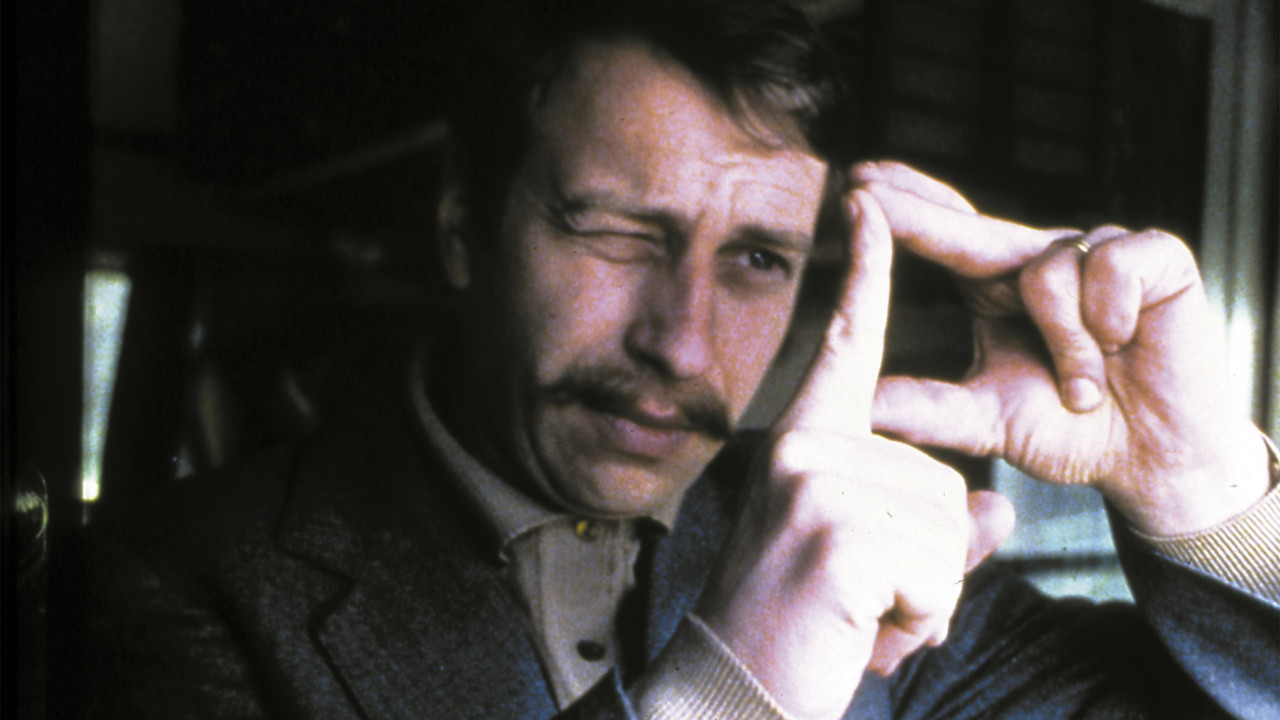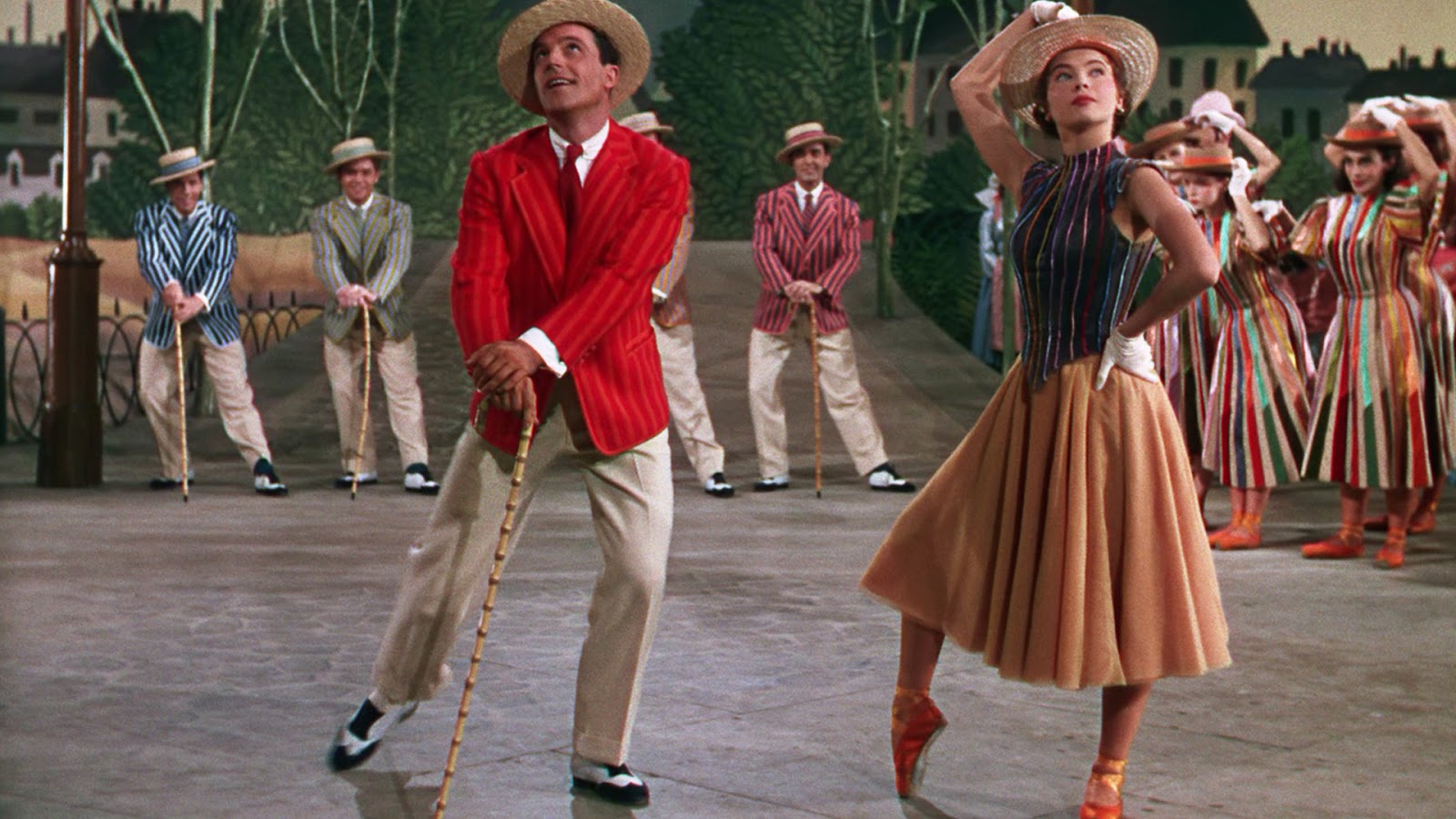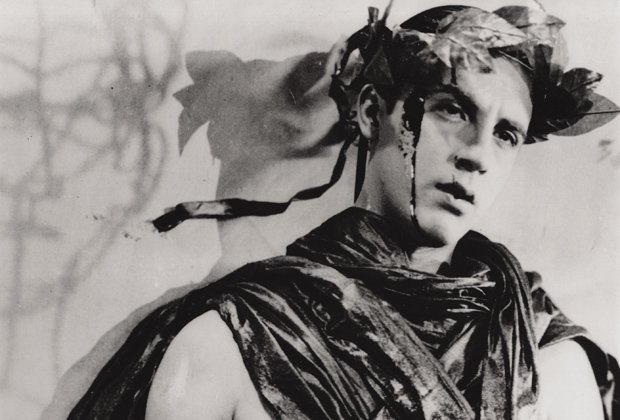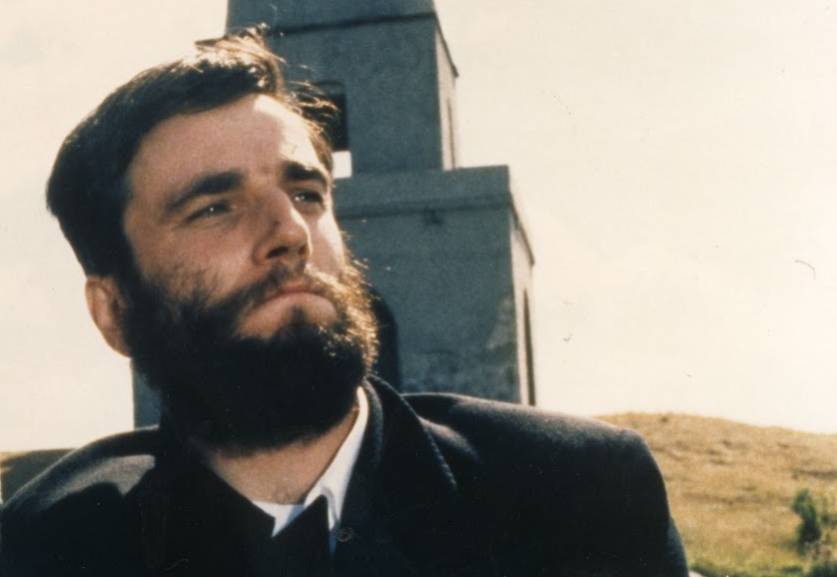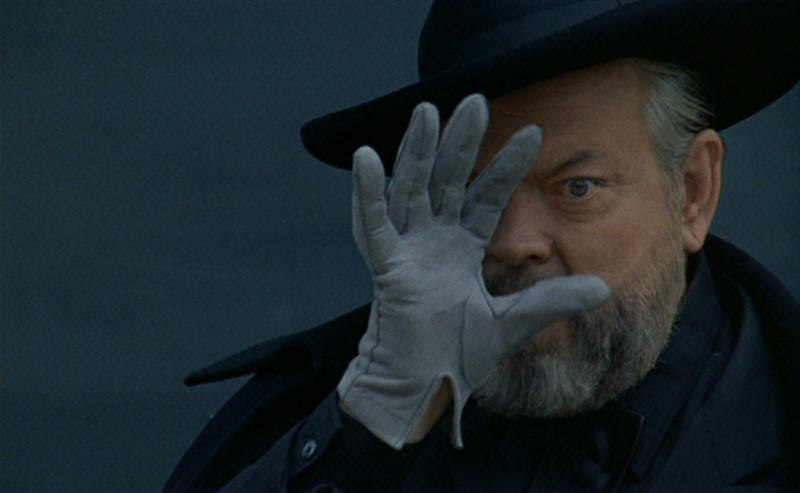14. Camera Buff (Amator) / 1979 / Krzysztof Kieślowski
There are many superlative movies about filmmaking, the so-called “seventh art” as the French say. 8½, Day for Night, and The Bad and the Beautiful come quickly to mind. These films frequently highlight the collaborative aspect that has come to define the filmmaking process since the advent of the Hollywood studio system. Camera Buff instead offers a vision of filmmaking as the intensely personal labor of a solitary artist.
Affectingly acted by Polish film star Jerzy Stuhr, Filip is an ordinary factory worker who develops an obsession with moviemaking after buying an 8mm camera to commemorate the birth of his daughter. He begins tirelessly documenting the world around him, from friends and family, to workers at the factory.
While his peers are quick to recognize the value of his work, his wife deplores the strain it has placed on their relationship. When Filip finds himself at odds with his superiors over the subject of one of his films, he is forced to come to terms with the revelatory power of his art.
13. The Hand (Ruka) / 1965 / Jiří Trnka
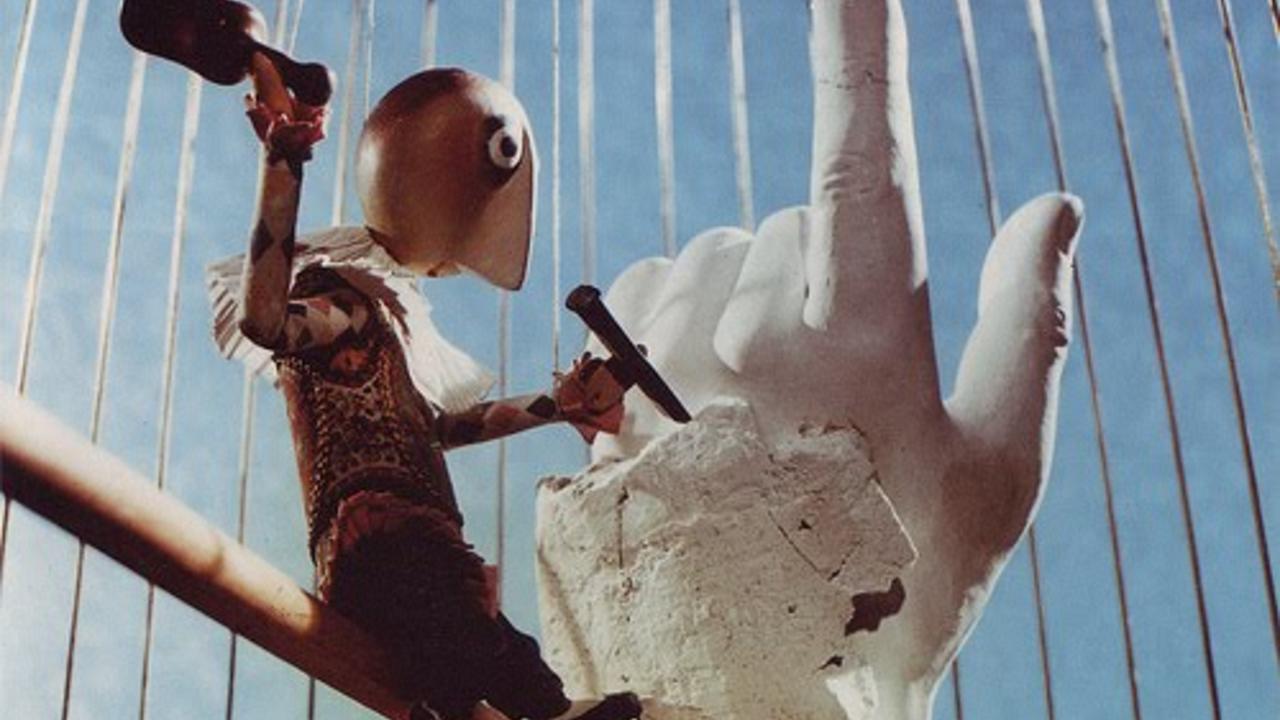
Jiri Trnka first became famous in Czechoslovakia for his puppet-animated adaptations of local legends and fairy tales, and is sometimes referred to as the East European Walt Disney. That moniker could not be more off the mark when it comes to this film however, which is both his last and most personal. Only 20 minutes long, it is as simple and austere as a parable.
A potter lives alone with his wheel and a potted plant. One day a gloved hand comes knocking at his door. He wants a sculpture in his image. The potter refuses, shutting him out of his room. As the days go by, the hand becomes increasingly harder to dismiss. Eventually, he has no choice but to comply.
Baldly autobiographical, the film comments on the situation once faced by Trnka, as well as that of any other artist forced to work under a restrictive political regime.
12. An American in Paris / 1951 / Vincente Minnelli
Its plot may not be anything special, and it may not have anything profound to say about art or artists, but An American in Paris can be faulted for little else.
Starring the legendary Gene Kelly and featuring a classic Gershwin score, the musical unfolds against dazzling reproductions of Parisian locations, culminating in an extended ballet sequence inspired by famous French paintings. An American in Paris comes off like an extravagant love letter from Hollywood to Paris.
11. The Blood of a Poet (Le sang d’un poete) / 1930 / Jean Cocteau
Jean Cocteau’s The Blood of a Poet is about as much ‘about’ art and artists as a surrealist film can be. Described as a “group of allegories,” the film is composed of four distinct segments which trace the theme of the danger and turmoil inherent in the artistic life. In the first segment, the Poet is drawing at an easel while the Battle of Fontenoy rages outside.
Even though he has managed to evade the ravages of war, Cocteau insinuates, he remains at the mercy of the violent act that is artistic conception. With charcoal, the Poet draws a face, which suddenly starts to move its mouth. Terrified, he attempts to smear it away, only to discover it has moved to his palm. After trying to drown it, he turns the mouth on himself in a symbolic act of onanism.
Cocteau was known as an artistic chameleon; part writer, part painter and part filmmaker, and The Blood of a Poet is a perfect demonstration of this. Every scene is overflowing with illustrations, spoken verse and sculpture, often within a single frame. There’s simply nothing quite like it.
10. My Left Foot / 1989 / Jim Sheridan
Bolstered by stellar performances and a remarkable true story, My Left Foot: The Story of Christy Brown is an inspiring tribute to the life of an Irish painter and writer who lived with severe cerebral palsy. Daniel Day Lewis tackles the daunting role of Cristy with astonishing convincingness, unafraid to hint at the less savory aspects of his personality.
The film traces Cristy’s development as an artist, from his early attempts at painting to his later recognition as an author, juxtaposing episodes from his autobiography with a romantic side-story. My Left Foot is the essential motivational film about an artist.
9. The Horse’s Mouth / 1958 / Ronald Neame
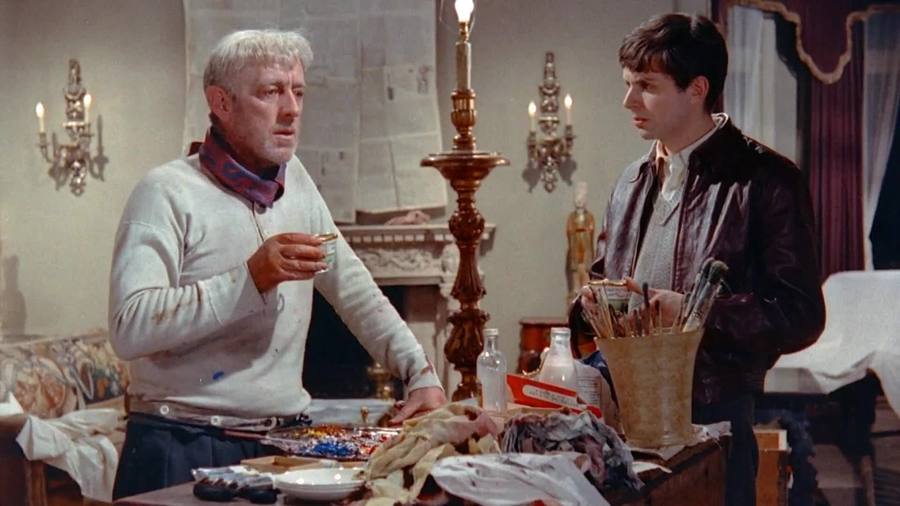
Alec Guinness both wrote and starred in this adaptation of Joyce Cary’s The Horse’s Mouth. By that time, Guinness had attained the status of a household name in the UK for his work with David Lean and with Ealing studios.
Gulley Jimson is a grizzled but talented painter with a prickly personality. He lives on a ramshackle houseboat on the Thames adjacent the local pub, run by the equally ill-tempered Ms. Coker (Kay Walsh). Newly released after a short stint in jail for harassing a wealthy patron, Jimson starts scheming ways to pay back his lengthy bar tab, all the while looking for the perfect wall for his next masterpiece.
If you enjoy British comedy, this is unmissable.
8. F for Fake (Vérités et mensonges) / 1973 / Orson Welles
This is the last (finished) Orson Welles film, and by far the most unusual. Think of it as a cinema dressed like a B movie, or an avant-garde mockumentary. Whether it was to escape critical pigeonholing, or more due to the influence of his newfound cameraman Gary Graver, a low-budget filmmaker and occasional porn director, F for Fake is totally unique, yet distinctly Wellsian.
Building on documentary material shot by François Reichenbach about the art forger Elmyr de Hory, interviews with de Hory biographer and fellow conman Clifford Irving, newsreels and stock footage, Orson Welles and his girlfriend Oja Kodar hatched this ingenious but rambling meditation on authorship, art, and illusion.
Stories of de Hory’s most high profile frauds are recounted by the man himself, who also agreed to be filmed while painting several astounding imitations of Picasso, Matisse, and Modigliani. It is a hodgepodge of different film stocks, edited together with an exuberance bordering on naivety. We are even witness to home-movie style interjections featuring Welles, flushed with wine and surrounded by middle aged women as he officiates for the camera in some dimly lit restaurant.
This film was widely panned on its release, but hindsight has revealed it as truly ahead of its time. Fans of Exit Through the Gift Shop in particular should appreciate the many similarities between the two films.
